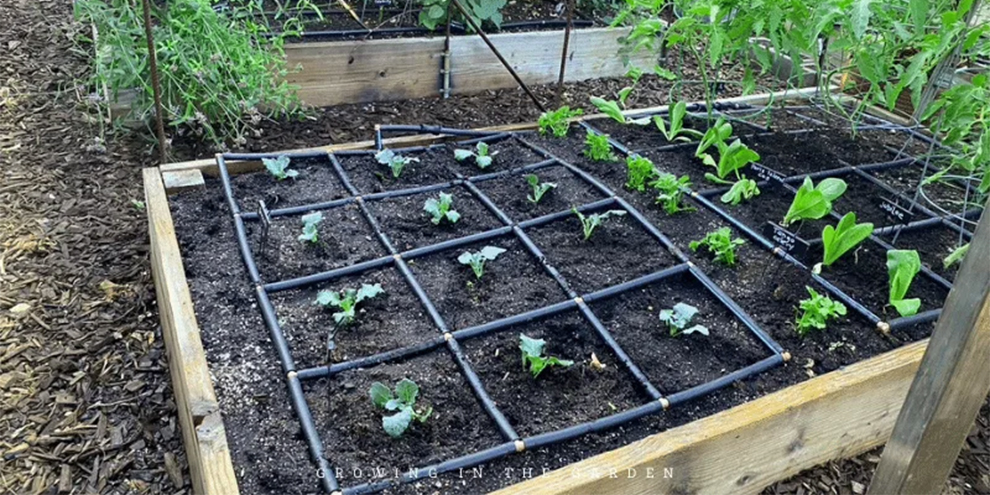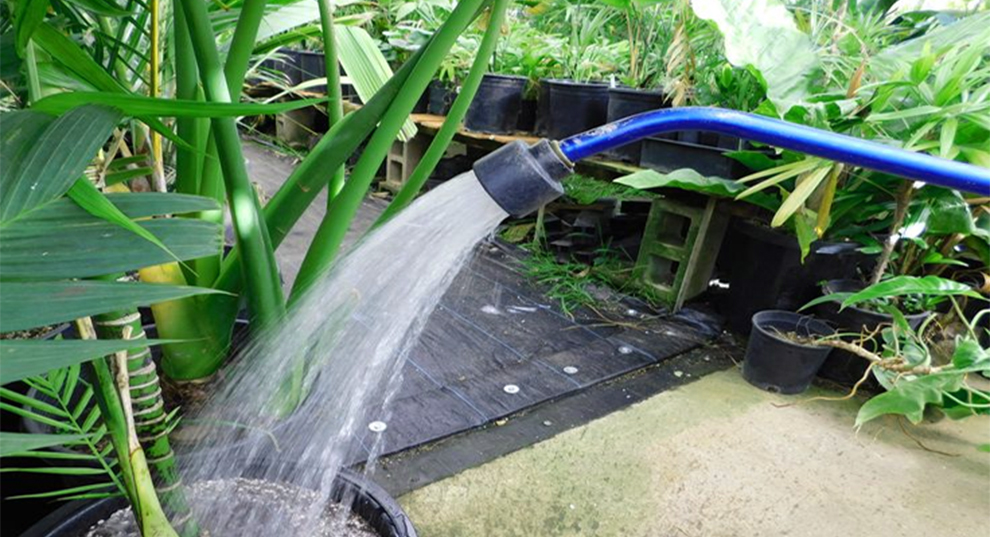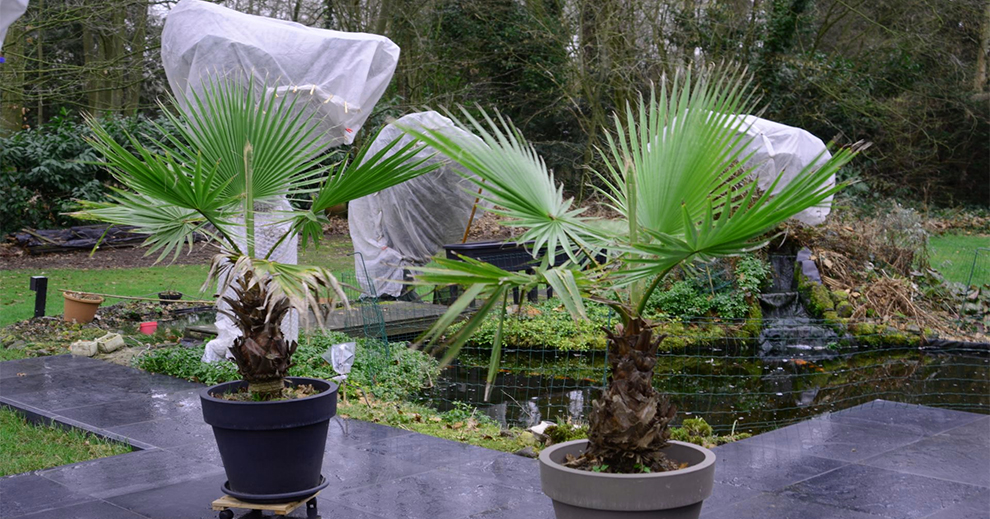How To Take Care Of Mexican Fan (Washingtonia Robusta) Palm Trees?
Mexican fan palms are not very demanding. They thrive in multiple types of soil ranging from sandy, loamy, silt but it should be well-drained. They require full sun but water them only when the soil seems dry to touch.

Washingtonia palm trees are commonly known as the Mexican fan palm or Skyduster. Besides this, you may also know these trees by their botanical name Washingtonia Robusta.
Normally, you can spot these fantastic ornamental trees along the coastline. But many people are also fond of having exotic trees in their large backyards or residential landscape.
The cheerful fronds of this tree rest at the top of its slender and straight trunk giving it a more enticing appearance. But if you neglect the Washingtonia palm care routine, its beauty and shade will fade over time.
So, these trees require regular care and maintenance to stay healthy and appear their best for a long time.
Being low maintenance, palm trees need sporadic watering. These trees enjoy full sunlight with well-drained and highly fertile soil. It is best to trim them before they reach the stage of maturity.
Also, these trees are best suitable to grow in a huge space because of their massive root structure. If you are thinking about planting palms in your backyard, grow them at a minimum of 10 feet from the boundaries of your home.
Washingtonia Palm Care Summary
| Family | Arecaceae |
| Common Name | Skyduster, Mexican Fan Palm |
| Native Area | Central America |
| Height and Width | 50 to 100 ft. tall and 8 to 10 ft. wide |
| Growth rate | 2-4 feet annually |
| Sun Exposure | Full sunlight |
| Soil Type | Well-drained, Sandy, Loamy, Silt |
| Fertilizer | Slow release and Potassium rich |
| Soil pH | Neutral, Acidic |
| Watering | Only when the soil seems dry |
| USDA Hardiness Zones | 9-11 |
How To Care For Washingtonia Robusta?
To care for the exquisite Washingtonia robusta means providing it with the perfect environment for healthy growth. These exquisite trees promise beauty and shade in any landscape for many years.
If you have a spacious backyard and wish to give it a tropical ambiance, consider adding the stunning Washingtonia palm trees.
These are really easy-to-care trees with basic requirements like occasional watering, full light, optimum fertilization, well-draining soil, and more. Once you understand everything about Washingtonia care and keep them in a favorable environment, you can expect them to thrive with ease for years.
A. What soil do Mexican fan palms (Washingtonia palm) like?
The wonderful Mexican fan palm trees are not very choosy when it comes to the type of soil in which they are grown. They can grow in well-drained, sandy, loamy, silt soils. They even thrive on arid surfaces during periods of drought.
Even soils with acidic to neutral pH levels are perfect for Washingtonia robusta care. If you live in any part of coastal regions, consider growing Washington palm without trouble as it can grow even in salty soil.
B. Do fan Washingtonian palms like the full sun?
When it comes to the Washingtonia fan palm, make sure it gets full sunlight to grow its best. This means you should keep it in natural light for at least six to eight hours per day.
So, make sure to choose a location that gets a good amount of sunlight throughout the day. However, it can also tolerate partial sunlight and thrive well.
C. Plant spacing as per growth habits

As a general rule, Mexican palm trees should be grown at least 10 feet away from any concrete structure. However, if you are thinking about planting these trees as a privacy hedge, make sure to keep them far apart, at least 3 to 5 feet away from each other.
Just remember that the distance between Washingtonia trees depends on the type and size of tree you want to plant. So, if you want to know the precise allowable spacing for your tree, you should
be well prepared in advance keeping in mind its growth patterns.
Learn how to care for a Mexican fan palm to get the best exotic view of your residential landscape.
D. Temperature & humidity
Washingtonia palm trees can tolerate extreme heat conditions so you can also grow them in warm desert areas. However, this doesn’t mean that these trees cannot be grown in cold weather conditions.
The surprising fact is that this variety of fan palm trees can withstand even cold weather conditions. If you live in a region where the temperature drops down to 20°F or goes above 40°F you can consider growing Washingtonia palm trees in your backyard.
There is no doubt that they can survive in varied temperature ranges, but they grow best in moderate humid conditions.
E. How much water does a Washingtonia palm need?

The Washingtonia palm tree requires moist soil to grow best. So, if you want it to grow beautiful and healthy, just follow the regular watering Washingtonia robusta care routine. This precisely means planting it in regions with a high water table.
Even though this stunning tree can survive in drought-tolerant regions, they require consistent watering. Just make to allow the soil to dry out before you again add water to it.
This is to make sure that the soil doesn’t get waterlogged. You can add sufficient water to the soil once it is completely dry. However, don’t allow the tree to dry out due to lack of water as it can stunt its growth or even kill it.
F. What fertilizer for Washingtonia palm is best?
For efficient growth of your Washingtonia palm tree, make sure to feed it with slow-release fertilizer every month. Just follow this routine, specifically during the growth season as these trees are rapid growers.
Always choose fertilizers rich in potassium as they can solve multiple issues related to your tree’s health. You can choose from fertilizers specially made for Washingtonia palm care. Remember to follow the instructions given on the product label to know the right usage amount of fertilizer.
G. Pruning
Keeping in mind the fast growth rate of Mexican palm, they need pruning from time to time. When these trees grow old their fan-like fronds droop and gather around their base. It basically looks like a huge skirt spread around the palm tree.
As they age, these fronds start to fall away. On the other hand, you can simply get rid of the damaged fronds to keep your Mexican palm tree intact and clean. It will also save your tree from any fire hazard.
However, if you have a Washingtonia palm tree with a massive spread, you can choose a professional arborist to get it pruned.
H. Repotting
When the palm tree reaches maturity and outgrows the pot, you will need to shift it into a new pot. Also, you need to repot your Washingtonia palm once in two years if it is 6-7 years old. If your plant is older, repot it every three years.
This is an important part of Washingtonia palm care because root-bound plants don’t do well. You can do it easily by tilting the container on its side and softly tapping its bottom to make the roots less firm.
Now gently remove the palm from the container and plant it into a new and larger container.
I. Propagation
Mexican palm trees can be easily propagated in your garden through seeds. The best possible time to get a beautiful Mexican plant is to propagate it during the months of spring or early summer.
The seed generally takes two weeks to germinate when planted in uniformly warm and moist conditions with temperatures varying between 85 degrees to 95 degrees Fahrenheit.
J. Pests & Diseases
While discussing “how to take care of Mexican fan palm trees”, it is important to touch upon the topic of pests & diseases.
Even though Mexican palm trees are pretty sturdy but sometimes they can get affected by diseases or fungal infections. You can treat fungal infections on fruit with the help of palm-suited fungicide.
There are several pest infections, which can cause trouble to your plants such as leaf tip necrosis, discolored leaves, and dead or dying leaves.
All these diseases, however, indicate a common issue which is a lack of potassium. The best part about Washingtonia palm tree care is that you can easily resolve such issues. Just go for a high-quality fertilizer specifically made for your palm tree and add it to your tree as per instructions. Just give your plant enough time to heal and recover.
Mexican Fan Palm Problems and Taking Care Of It?
There are several diseases that can affect the growth of a healthy Mexican fan palm. This includes Fusarium wilt, Phytophthora bud rot, Ganoderma butt rot, and more. Some of these diseases can be remedied while others are lethal.
For example, mature Washingtonia trees can be attacked by Ganoderma butt rot. It is a disease that leads to a rotting trunk from the bottom and then gradually spreads upwards damaging the trunk from within and outside.
So, for Washingtonia palms’ health, it is important to spot such diseases on time. You should prune any damaged leaves on your trees on time before it starts attracting pests. Further use a good quality fungicide and insecticide. If the problem is because of a deficiency, use a fertilizer that meets plants’ specific needs.
Washingtonia Robusta Indoor Care

Most people prefer to grow the beautiful Washington robusta trees in pots because of various beneficial reasons. This plant is known to improve air quality by removing carbon monoxide toxins and formaldehyde from the environment surrounding it. In exchange for this, you just need to follow proper care instructions.
Just take care to keep it in indirect and bright sunlight. However, this plant can also thrive well when placed under partial shade. It is recommended to place it in direct sunlight during the morning or late afternoon, just for a few hours.
Another aspect for Washingtonia robusta palm tree care is watering. Water it frequently, but ensure to let the soil dry out from the top before watering. This helps in preventing roots from getting waterlogged when placed indoors.
The Washington robusta plants are usually happy when kept in normal home temperatures and humidity. To maintain its good health, you can mist it occasionally. Take care to feed it with quality fertilizers just one or two times a year.
